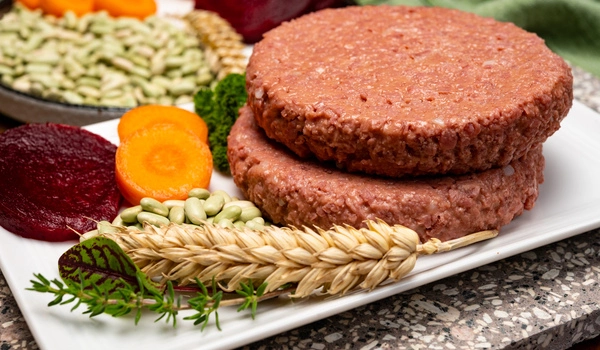Plant-based meat is protein made from plant ingredients that is specifically designed to have the taste, texture, color, mouth feel, and aroma that we associate with animal meat. Beyond Meat and Impossible Foods, two leaders in this emerging industry, have products that are slightly different but truly remarkable.
Many people are now on board with the plant-based meat movement. Protein-rich plants, such as soybeans, are common ingredients, but it is unknown how much of the nutrient makes it into human cells. Researchers report in the Journal of Agricultural and Food Chemistry of the American Chemical Society that proteins in a model plant-based substitute were not as accessible to cells as those from meat. The team says this knowledge could eventually be used to develop more healthful products.
Restaurants and grocers across the country are struggling to meet the demand for the hottest new food trend: plant-based burgers. These new kids on the butcher’s block meld features of meat with those of plants in an unlikely marriage and are being sold alongside their muses in the meat case.
Beyond Meat took a unique approach to creating meat. They began with pea protein isolate, canola oil, and coconut oil. Beyond Meat scientists figured out how to turn powdery pea protein into the protein fibers that give meat its texture, firmness, and ability to hold together as a burger by figuring out the right combination of temperature, time, and pressure.
Almost any type of alternative meat, from ground beef to fish sticks, is now available to consumers. Plants are dehydrated into a powder and mixed with seasonings to mimic the look and texture of the real thing. The mixtures are then usually heated, moistened, and passed through an extruder. Because the plants used to make them are high in protein and low in undesirable fats, these products are often thought to be healthier than animal meats. However, laboratory tests have revealed that proteins in substitutes do not degrade into peptides as well as those in meats. Osvaldo Campanella, Da Chen and colleagues wanted to go a step further and see if human cells can absorb similar amounts of peptides from a model meat alternative as they can from a piece of chicken.
Using the extrusion process, the researchers developed a model meat alternative made of soy and wheat gluten. When the material was cut open, it revealed long fibrous pieces inside, much like chicken. Cooked pieces of the substitute and chicken meat were ground up and broken down with an enzyme that humans use to digest food. In vitro tests revealed that meat-substitute peptides were less water-soluble than chicken peptides and were not as well absorbed by human cells. With this new understanding, the researchers say the next step is to identify other ingredients that could help boost the peptide uptake of plant-based meat substitutes.

Beyond Meat took a unique approach to creating meat. They began with pea protein isolate, canola oil, and coconut oil. Beyond Meat scientists figured out how to turn powdery pea protein into the protein fibers that give meat its texture, firmness, and ability to hold together as a burger by figuring out the right combination of temperature, time, and pressure.
Make no mistake: both companies use a tremendous amount of chemistry, technology, and processing to create meat. Leaving aside whether the products successfully look, taste, feel, and cook like meat (more on that later from Chef Jeff Mahin), the process of creating these products raises its own set of questions.
Plant-based chicken is a food product that mimics the texture and flavor of meat. Plant-based chicken is typically made from ingredients such as vegetable protein, soy, or wheat and formed into patties, nuggets, or roasts. Food products like plant-based chicken are generally considered a healthier alternative to meat because they contain higher levels of fiber and lower levels of saturated fat. Most importantly, plant-based meat substitutes are a compassionate dietary choice, and eating them contributes to positive shifts in animal welfare with every bite.
The authors gratefully acknowledge funding from The Ohio State University’s College of Food, Agricultural, and Environmental Sciences.





